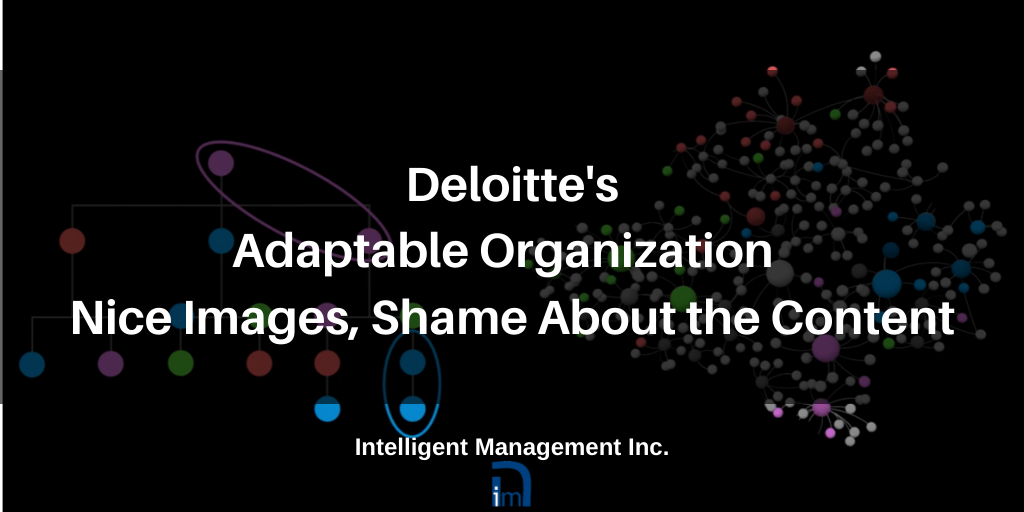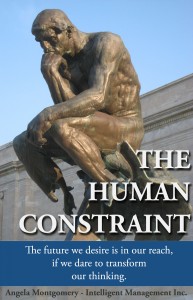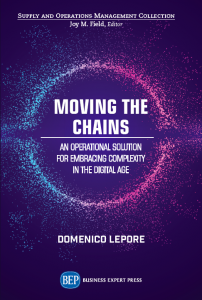
We are not in the business of comparing or contrasting what other consultants do. Consequently, we would not normally engage in a takedown of anybody’s work. However, the inadequacies of what Deloitte is proposing with its ‘Adaptable Organization’ could not elude us. We’re grateful to all those thousands who viewed our post on LinkedIn about it and the many who commented on it, so we felt compelled to articulate:
- why what they propose is fallacious (PART ONE)
- what we believe is a “viable vision” and path for the long-overdue overhaul of the hierarchical/functional model (PART TWO)
PART TWO offers a concrete outline of an operational solution for any organization that is serious about the transformation of the prevailing organization design into one of whole system optimization. No AI required! In the meantime, you can find out how to do manage an organization as a network OPERATIONALLY by reading our books, starting from our 2010 book ‘Sechel: Logic, Language and Tools to Manage any Organization as a Network’, through ‘Quality, Involvement, Flow: The Systemic Organization’ (2016) ‘Moving the Chains: An Operational Solution for Embracing Complexity’ (2019) by our Founder Dr. Domenico Lepore , our Springer chapter ‘Managing Complexity in Organizations through a Systemic Network of Projects’ (2016) and my business novel ‘The Human Constraint’. You can find out more on our books page.
Banks, insurance companies, credit card companies, huge conglomerates and, generally speaking, companies that fall into the “too big to fail category” are exempted from reading what follows. For everybody else, we promise you will find this article not just revealing but useful.
There’s a saying in Italian, “When an ant is about to die, it sprouts wings.” In other words, when someone is really struggling they start doing things that are completely outside their nature. We are not suggesting that Deloitte is nearing its demise but with their attempt to offer the “organizational solution” of the Adaptable Organization they are way out of their comfort zone. They are trying to be part of a paradigm shift without any understanding of the science required. We are sure they won’t care about anything a boutique firm of organizational scientists has to say, so let’s take a candid look at their ‘The Adaptable Organization’ document.
After a bunch of buzzwords, (Exponential change, Start-up mindset, Enterprise agility, networks of teams) it’s clear that Deloitte is still very firmly rooted in a hierarchical, functional vision of control where you really don’t want to work because it’s miserable. (This is almost subliminal in the way they repeat the word “happy” through these documents.) It’s all about dealing with what they revealingly refer to as “human capital”. Need we say more?
Their introduction includes:
In a world where the future is uncertain, organizations should consider shifting stable and predictable characteristics to adaptable ones.
At the beginning of their Ecosystem section, they state:
In stable organizations, competitive advantage can be achieved using internally focused strategies. In unpredictable times, organizational survival depends on understanding a broader external ecosystem where purpose and goals are targeted to customer missions which become a north star to rally leadership and teams around.
This is so wrong it’s hard to know where to start. It’s not about stable times versus unpredictable times. It’s about understanding the nature of reality and that means understanding complexity. Complexity, in its scientific sense, is something Deloitte doesn’t even mention so how can they deal with it? What is a stable organization? Presumably, the traditional functional, hierarchical structure Deloitte knows and loves. After all, it got them where they are (and I met people who would cry at their desks working for them.) They seem to be suggesting that only because times are unpredictable, we have to understand a “broader external ecosystem.”
Deloitte clearly has NO understanding of companies as systems, let alone ecosystems. No company can rely on “internally focused strategies”. Why? Because EVERY COMPANY IS A SYSTEM, as Dr. Deming taught us back in the 1950s. That means it has inputs and outputs because it is part of a SUPPLY CHAIN, otherwise it would not exist. And that is the ONLY way to be customer focused, by understanding that you are a system, and the customer is a major part of that and you need their continuous feedback to continuously improve. But Deloitte knows none of this as it has never embraced a systems approach. Indeed, it seems to be something novel for them to suggest catering for customer needs. Their copy phrases it as “purpose and goals are targeted to customer missions which become a north star to rally leadership and teams around.” Hurray. Let’s all rally.
And as for being “stable”, organizations DO want stability and predictability. This is NOT in conflict with being adaptable. It is the basis of any organization that wants to cope with complexity. There is only one form of stability any company should pursue and that is statistical predictability in its processes. This allows leaders to understand how variation is affecting their operations and to predict the outcome of their own processes. Without this knowledge, anything could happen tomorrow and they wouldn’t know why. Any organization that is not practicing statistical process control is flying blind. The word variation does not appear in Deloitte’s document.
Adaptable Organizations embed themselves in external networks and position workers to take on the role of “active sensors,” always detecting, scanning, and adapting to fluctuating customer needs.
First of all, there is no external network to embed yourself in if you are a company. This is just Deloitte revealing its mindset of separation. By definition, you as a company are already embedded in a network of conversations. And if you think of your “workers” (note that they don’t even refer to them as staff or personnel) as “active sensors, always detecting, scanning and adapting to fluctuating customer needs” then you are treating them like sniffer dogs. Any company that wants to grow sustainably should be constantly and permanently engaged in ongoing conversations with their customers and potential customers. This is an essential part of Deming’s vision and what the Theory of Constraints embeds into its External Constraint protocol.
…the Adaptable Organization at the core of the ecosystem, driving the focus, continuity, and strategy of the organization; the flexible contingent workforce that occupies roles with fluctuating demand; the outsourced specialists or vendors that provide specific services to the organization; and the community/crowd – a modern form of workforce linked to the world. All are connected through shared purpose.
This is, frankly, gobbledegook. When companies understand themselves as a system, they understand that they are, to quote Deming, a network of interdependent components that work together to achieve a common goal. In for-profit companies, the goal is to make money, now and in the future. Now, this can be done in a way that is ethical and that, if you think systemically, automatically takes into consideration the implications for all stakeholders. It has to be win-win. This is because win-win is the only sustainable way to behave, economically, ecologically and ethically. It’s not about some vague “shared purpose” that “motivates people to succeed.”
“It would be enough to stop demotivating people” to paraphrase Deming. What motivates people is understanding that they are part of an organization where not only is there a clear goal but where the work they do makes sense because it is well deployed and transparent, they understand precisely what they have to do and why, and there is full alignment between responsibility and authority.
A shared purpose is the ‘glue’ that holds the ecosystem together. In the absence of a strict and controlling hierarchy, a purpose becomes the North Star, reducing the need to constantly seek direction from superiors. By bringing a purpose statement to life and connecting the dots for workers through storytelling and meaningful narratives, workers are more likely to commit to the organization’s strategy and execution.
No, no, and again, no. This is not about astronomy. And again, the language so gives Deloitte away, referring to upper members of the hierarchy as superiors while they try to “dismantle” it. If Deloitte thinks that you can control an organization and implement a strategy through ”storytelling and meaningful narratives” then they are truly lost and it is irresponsible of them to propose this as a model.
And here’s a mini case history:
For example, a recent Adaptable Organization redesign with a banking client used components of the customer experience to define missions (e.g., “help me invest for the future,” “help me manage my lending accounts”). Teams were organized around specific things that mattered to “every day” people looking to build nest-eggs, saving for a first home or paying for their children’s education. It’s a lot easier to understand the role you play in delivering against your company’s strategy when your day-to-day work revolves around what makes customers happy.
So here we have Deloitte helping a bank. To do what? Minimally address what any bank customer might expect as opposed to what banks normally do, i.e. very little that actually helps their customers even though they depend on their money to exist, plus overcharging to cover inefficiencies.
It’s like watching Don Draper from Madmen trying to be hip. Painful.
And now the document moves on to discuss The Organization.
The organization
When change is predictable, stable organizational hierarchies can support order, clear decision‐making and functional silos to enable maximum efficiency. However, in an era of exponential change, traditional organization models cannot keep up effectively.
Adaptable Organization design aligns formal and informal structures to customer- focused missions.
The document goes on to talk about network analyses revealing informal, cross-functional structures. What emerges clearly from Deloitte’s words is a deep-seated confusion. They believe that “structured” organizations are intrinsically stable and predictable and support order, efficiency and good decision-making but uncertain times call for something different. They want to “align formal and informal structures”. In other words, they want to keep both simultaneously. They want to offer a way for siloed organizations to keep their silos but have nice modern networks of teams swimming happily across functional borders. So everyone is happy. This is because they fail to understand that organizations are intrinsically networks that exist within a network of networks. This calls for a complete transformation of the organizational structure and it all starts with the mindset and mental models of leadership.
It’s clear from their diagram that what they are proposing is a mish-mash. They are not shifting any paradigm. They are superimposing something that sounds more appropriate onto what they truly believe in – the “stable” hierarchical/functional organization. They clearly equate “efficiency” with that model. This is because they don’t understand effectiveness.
When they talk about teams, their confusion is even more apparent. They suggest that teams should be “mission-driven not profit-driven”. This sounds warm and fuzzy but it is ludicrous if the team works for a for-profit company. What has to be clear are the goals and the precise actions that need to be taken to achieve them. What is lethal, instead, rather than being “profit-driven” is to be cost-driven. They do not even mention this as they live in a cost-accounting world, not a throughput-driven one. Indeed, the concept of throughput or speed of flow does not even emerge. How could it within their hybrid mechanistic/network suggestions?
Leaders, they suggest, should energize, empower, connect. How, exactly?
And when it comes to assessing the individual in all this, they have thankfully realized that individual annual assessments are a waste of time, and so they are replacing them with, once again, some sort of confused hybrid.
A banking client recently took this idea a step further and integrated team performance into an individual’s overall performance considerations: the success of the team determines half of the overall outcome, not just the individual.
Ouch.
But let’s be fair. Not everything in the Deloitte document is nonsense. The main problem is the context. You can’t work backwards – go out and look at what seems to be “working” and then try and model/copy it with your own version, driven by a software platform. Systemic transformation has to start from the original thought, from asking the fundamental questions to understand the root problem. Only then can you develop a breakthrough solution that truly shifts the paradigm from mechanistic to systemic. Otherwise it’s just lots of shiny recommendations and no operational instructions, beyond acquiring their AONA software platform.
Why are we so diffident about Deloitte’s entry into the world of paradigm shifting and organization design?
Deloitte seem to have woken up to the fact that within any organization there are “informal networks”. This is an important step in the consciousness of an organization and various software products have been around for a while to map these networks. When you come at this realization from the perspective provided by network theory, the real problem becomes, if we are a company that has the goal of making a profit from our activities (otherwise we cease to exist) how do we orient the network, operationally, towards the goal?
Why are we so diffident? It’s because of their history. Deloitte has always been firmly entrenched in the linear thinking world of cost accounting and Excel spreadsheets. Their core business is compliance, not innovation. We therefore believe that their attempt to guide organizations towards a network-based organization is superficial. We suspect that Deloitte will be lacking in operational definitions and operational guidelines on management for their network solution. This is because of their accounting background and because their focus is on a product – their software platform.
There is a fundamental incompatibility between the cost accounting world of Deloitte and the network-based solution they propose. Like most organizations, what Deloitte offers its customers through its accounting and auditing services is still stuck in a pre-complexity paradigm that tells them the overall result comes from maximizing the performance of the individual parts. This is the very paradigm that has created traditional hierarchical/functional organizations with inevitable silos. Silos are the direct result of believing that if you break down the whole into separate parts you can manage and control them better. The prevailing measurement (and reward) system in a silo-based organization is Cost Accounting. Cost Accounting is the natural habitat of Deloitte so it is no wonder their message is confused. Cost Accounting and related budgeting techniques reinforce conventional, hierarchical/functional structures. The focus of cost accounting is to understand or “allocate” costs and its underpinning belief is that local cost optimization will translate into company-wide optimization. Cost Accounting reflects a “cost reduction world view” as opposed to a “performance improvement world view”. It has no way of capturing speed.
So it’s no wonder that still today, the majority of leaders and managers are unprepared to interpret and respond with speed to complex, non-linear phenomena, as the COVID-19 crisis has amply demonstrated. Our reality today is one where interdependencies and interconnections multiply at an ever-increasing speed. This is complexity in its most dynamic manifestation. Businesses, instead, are mainly managed by people with little or no understanding of these dynamics, let alone methods and tools to operate successfully and grow within them. This lack of understanding and knowledge, or epistemological framework in management, translates into a series of very real barriers to a true and lasting economic recovery. It will take much more than a software from Deloitte to overcome the gap in knowledge of how to manage complexity operationally. (Although their video is very cute.)
You can read PART TWO: The Network of Projects –a Concrete and Operational Alternative to Deloitte’s ‘Adaptable Organization’ here: https://intelligentmanagement.ws/network-of-projects-concrete-real-operational-alternative-vagueness-deloittes-adaptable-organization/
Contact: intelligentmanagement@sechel.ws
Schedule an introductory call with us ‘







Leave a Reply